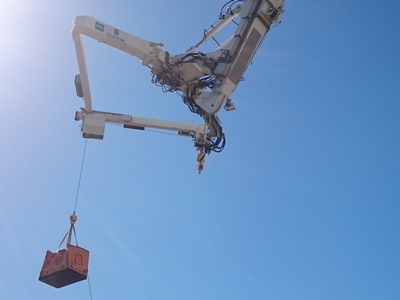Cranes
Controllab is specialized in the analysis and development of control software for cranes. The basis of our success is the digital twin, i.e a 3D simulation model, that we create for every crane. The twin enables us to develop and thoroughly test the software before the real crane has been built. With this technology we have helped our customers to develop highly successful new cranes.
System dynamic Cranes
Every crane has performance limits like the maximum speed or maximum load. With system dynamics, we investigate these limits and see how they affect the design of the crane. The basis is a parameterized 3D simulation model that we use to run simulations and investigate hundreds of scenarios. Special techniques like time and frequency domain analysis are used to analyze the model and use the outcomes to make design improvements.
Load control
Controllab has a set of control system solutions that will help to control the crane load in any environmental condition:
- Use additional lines connected with the load that keep the orientation of the load, follow the main hook automatically and damp out wind induced swinging of the load (tag line control).
- Compensate for the motion of the crane base, e.g, a ship in waves (motion compensation).
- Damp out wind and motion induced swinging of the load (anti-sway).
Digital Twin
Coupling the 3D simulation model with the control PLC’s is known as Hardware-in-the-Loop (HIL) simulation. With HIL simulation, the complete crane control system can be tested, before the crane is actually built. This technique has been proven time and time again to increase the quality of the control system and reduce the number working days during the FAT and SAT. At Controllab we even go further. By extending the HIL simulator with a high-res 3D visualization, a digital twin emerges that can be used for training crane operators.


